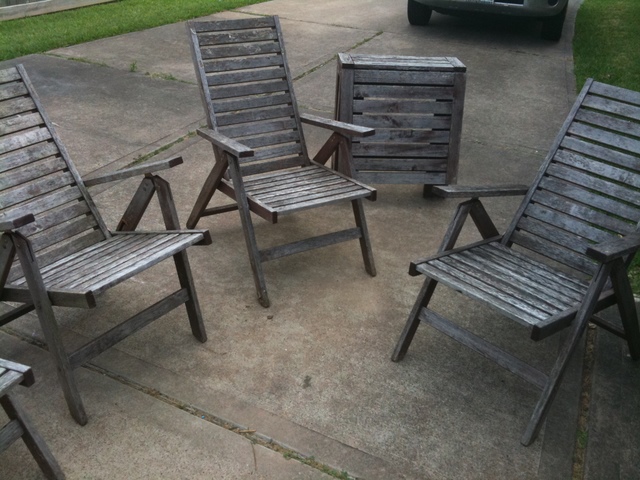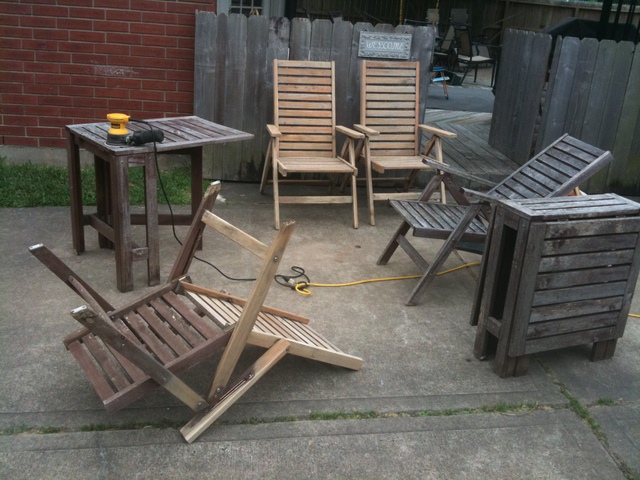Project Pamper Me
You know how sometimes you know something, but still: you manage to forget its meaning and import in your life?
I occasionally lead a retreat – a retreat that I created – called “Sabbath and the Busy Person.” Its focus is on breaking open the meaning of the 3rd Commandment to Keep Holy the Sabbath, and understand that it’s calling us to more than just worship.
After juxtaposing the theological concept of Sabbath with the reality of our lives, I offer the practical wisdom of Stephen Covey’s 3rd Habit: Put First Things First. In addition to Covey’s time management insights, I also use spiritual insights from Robert Wicks’ Availability. When you’re “too available,” giving to everyone but yourself, you’re sabotaging your own efforts. When you’re tapped – completely wiped out – you’re no good to anyone.
I know this. I teach it. I lead reflections and retreats on it. And yet I manage to forget it.
One of my favorite recent insights is how wonderful it’s been to have discovered the joy of having a hobby. I have posted about my new found hobby of Functional Art (see previous posts here and here), particularly with the addicting explosion of Pinterest. Not only do I enjoy actually doing these projects, but I find that when I do so, I’m able to turn my theologian-writer-teacher-mother brain off and focus only on creating something new. That in and of itself is a Godsend. Because when I do return to my busy-yet-wonderful-yet-stressful life, my brain is refreshed and energized.
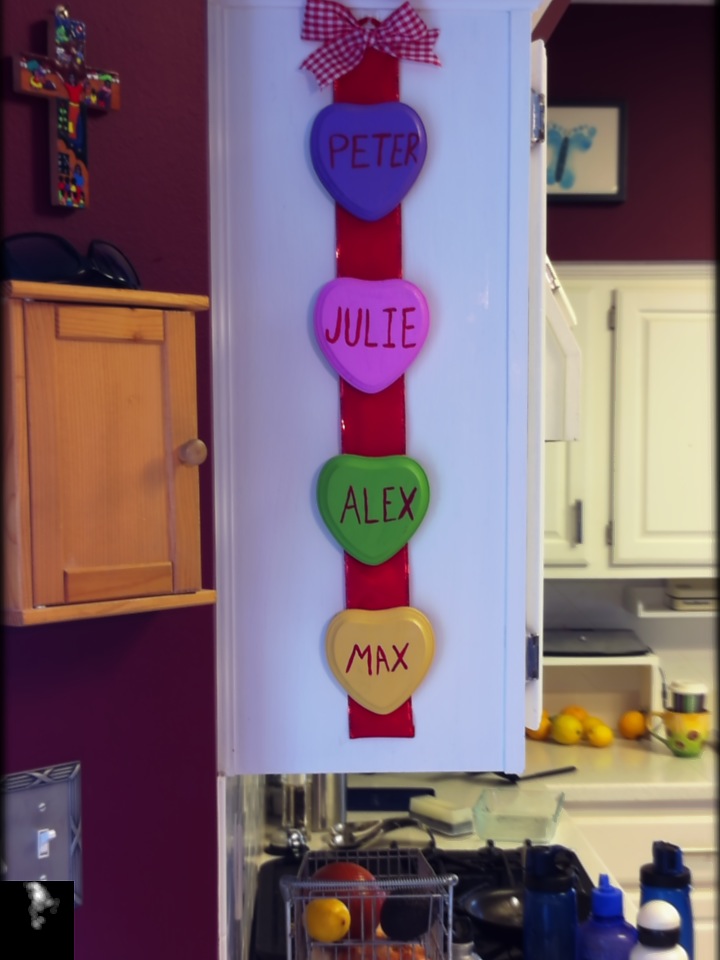
I’m like: “Ooooh – so this is what people mean by ‘Get a hobby!'”
Shortly after the New Year, my Mom and I were having a conversation about trying to shift out of a negative mood. Mom was struggling with a multitude of things and wanted nothing more than to clear her mind of the anger, frustration, and hurt over a situation that was beyond her control. She had spent the morning trying to distract herself from it all by house cleaning, checking email, Facebooking, and whatnot. (Mom hasn’t yet discovered Pinterest, which may explain why she was not able to fully distract herself.)
Mom had the right idea, but the problem with her modes-of-distraction were that they were just time-filling tasks. She didn’t really enjoy any of them. In fact, they tended to drain her energy more than fill her up.
When you need to change your energy, when you need to refresh and re-energize, you need to do something you love. Just. For. Fun.
About a week after my conversation with my Mom, my friend Stacey emailed a few in the girlfriend group whom she recalled having some success with what she called “Project Pamper Me.”
I am feeling…stretched thin…doing everything for everyone all the time, and I am feeling like I just want someone to take care of me!
And…I realized I should pamper and spoil myself like I do for others. I had this realization this morning while simultaneously making the family’s lunches, breakfasts, snacks for the day, fixing their hair, filling out school paperwork all while they ate and I bustled around. And I thought: Man, I would like to sit down.
So…I’ve decided I want to start pampering myself daily…but that’s where I get stuck. What to do? How? So far I have been just sitting in front of the TV…I haven’t even brushed my teeth because I am so drained from giving everything to others and not myself. And I don’t really feel like Teen Mom 2 is the kind of pampering I need…
How do I make myself get up and do something good for myself when I just want to wallow?
What are some long terms ways I can pamper myself – and keep in mind: I don’t want one more “to do” that I need to do to stay healthy. Help!?!
Stacey’s complaint, assessment, and hope-yet-concern resonated deeply. One of the reasons I have been so WOW-ed by my new-found “hobby” of crafting is that it really is something I enjoy for me. And doing it recharges me.
Our group of girlfriends used to do yoga as our “Project Pamper Me” – sometimes as a group, other times individually. And we loved it. And it’s been a while since any of us have done it. In some way, I’ve heard each of us express the desire to return, but we each have a stressed out “how can I fit this in?” attitude about yoga. So far it has been too much. And “too much” doesn’t bring anyone joy.
So Teacher-Julie came up with a 3-Part Plan, and Kari and Amalour added insights to flesh it out.
Project Pamper Me’s 3-Part Plan:
Step 1: Identify the things you like to do that are just for you and bring you joy.
Make a mental list. Or a real paper one. Get your mind around what it is, what way it needs to function to be for-you, by-you. And maintain that approach. I can’t just do crafts “for” other people (on demand), because then it becomes a thing. Even if I ultimately give something to other people, if my hobby is to be rejuvenating and re-joy-infusing, they need to flow from me. Not from others.
Kari suggests:
- Make a list of the things you enjoy that are just for you (include big and small things, i.e. pedicure, massage, movie, crafts, reading, going for a walk, sitting in the sun, taking a bubble bath, etc)
- Make it for you, to relax you and bring you joy! (Not another task to be done!)

Amalour is someone who knows how vital relaxation can be to physical health. She’s in the process of beating an aggressive form of breast cancer. For the second time. After a full mastectomy. With a husband and three children under the age of seven. She offered some of her own personal approaches to Project Pamper Me:
- Fit in at least two soaking baths a week, during the day when all the kids are away. I really take my time and totally relax.
- Sit out in the sun for a while and get those good melatonin juices flowing.
- Once in a while, get a sitter to feed and put the kids to bed. Then go to a cafe or Starbuck’s and read. Just get a break from the most frustrating part of the evening.
- Grab a healthy lunch somewhere alone… somewhere I can get served.
- When I haven’t gotten the me-time before the kids are home (and find I really need it), Tell them: “I need a little break, absolutely do not disturb me.” Make sure they have a snack, and go take a power nap or ready/study.
Step 2: Do that thing.
Make sure you’re staying true to the unblemished form of the hobby that brings you joy.
Step 3: Make a commitment to yourself to integrate it in to your life.
Sometimes integrating it in to my day is too difficult. But I can do a weekly commitment to care for myself.
Kari suggests integrating into daily life:
- To implement it daily make sure you have a bunch of small things on the list – not just big things. That way, when you don’t have a lot of time you can still take 10-20 min for you!
- I get in the TV trap too when I’m feeling worn out. Sometimes I choose to go with it and don’t feel guilty. Other times, I take a bubble bath and read a book. Definitely find some way, big or small, to pamper yourself daily.
- If it makes it easier, pick the same time everyday.
- If it doesn’t happen one day don’t beat yourself up, just start again the next day!
Amalour has the planning part down:
- Look at the coming week’s schedule and block out the me-time. Because for me, it’s not always the same time of the day every day.
- Make sure to leave ample time; don’t feel rushed.
- In general, try not to schedule so much errand-running around.
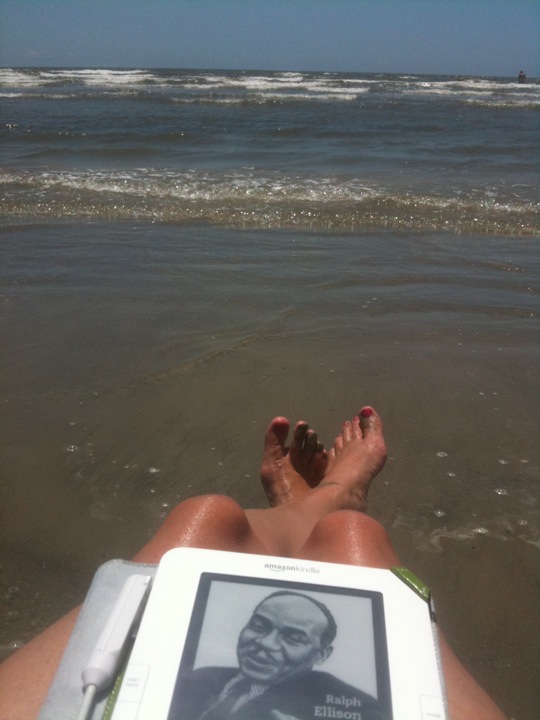
Whatever we choose to do for me-time, be it a hobby or an indulgence, taking care of ourselves has to be a priority. Think of it as a Sabbath Moment; the time in which you get a chance to rest, reflect, and re-energize. It is in these moments which we remember to rejoice in the beauty of Creation. And it is through these moments which we become our best selves.
If you’re still not convinced, I leave you with the words of Robert Wicks:
If you won’t do it for yourself, do it for those you love.
rejuvenation.self.care.logo by guttersnipe.76](https://www.flickr.com/photos/guttersnipe76) licensed under CC BY-NC-SA 2.0

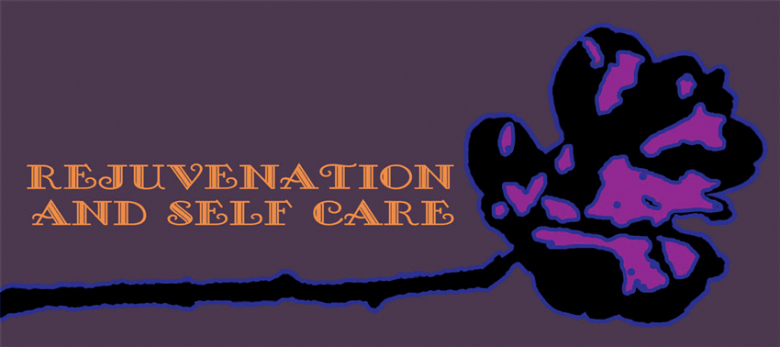
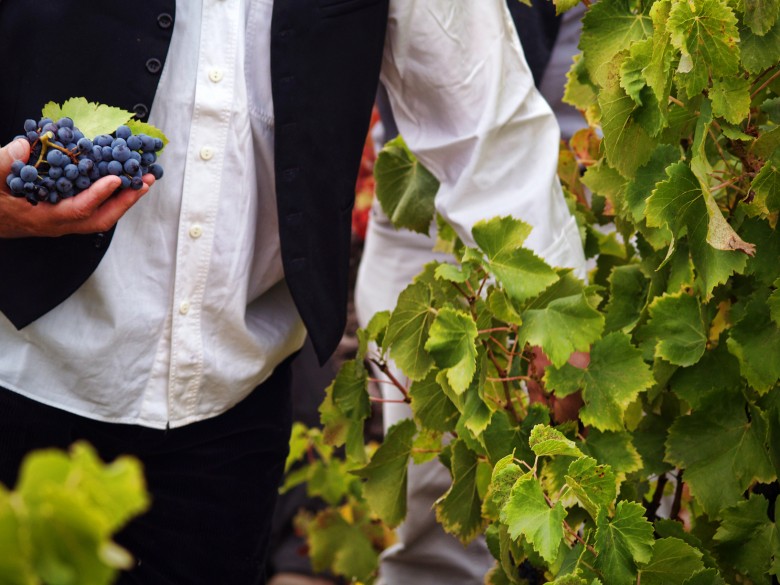
 When I returned to my classroom after taking a week off to get my head together, I told my students that I was “going through a difficult time,” which was an understatement, but it was all that I could muster. It was incredibly difficult to be teaching about the faith when I was so very angry, confused, hurt, and broken in my own relationship with God.
When I returned to my classroom after taking a week off to get my head together, I told my students that I was “going through a difficult time,” which was an understatement, but it was all that I could muster. It was incredibly difficult to be teaching about the faith when I was so very angry, confused, hurt, and broken in my own relationship with God. When it was evening the owner of the vineyard said to his foreman, ‘Summon the laborers and give them their pay, beginning with the last and ending with the first.’ When those who had started about five o’clock came, each received the usual daily wage. So when the first came, they thought that they would receive more, but each of them also got the usual wage. And on receiving it they grumbled against the landowner, saying, ‘These last ones worked only one hour, and you have made them equal to us, who bore the day’s burden and the heat.’ He said to one of them in reply, ‘My friend, I am not cheating you. Did you not agree with me for the usual daily wage? Take what is yours and go. What if I wish to give this last one the same as you? Or am I not free to do as I wish with my own money? Are you envious because I am generous?’ Thus, the last will be first, and the first will be last.”
When it was evening the owner of the vineyard said to his foreman, ‘Summon the laborers and give them their pay, beginning with the last and ending with the first.’ When those who had started about five o’clock came, each received the usual daily wage. So when the first came, they thought that they would receive more, but each of them also got the usual wage. And on receiving it they grumbled against the landowner, saying, ‘These last ones worked only one hour, and you have made them equal to us, who bore the day’s burden and the heat.’ He said to one of them in reply, ‘My friend, I am not cheating you. Did you not agree with me for the usual daily wage? Take what is yours and go. What if I wish to give this last one the same as you? Or am I not free to do as I wish with my own money? Are you envious because I am generous?’ Thus, the last will be first, and the first will be last.”
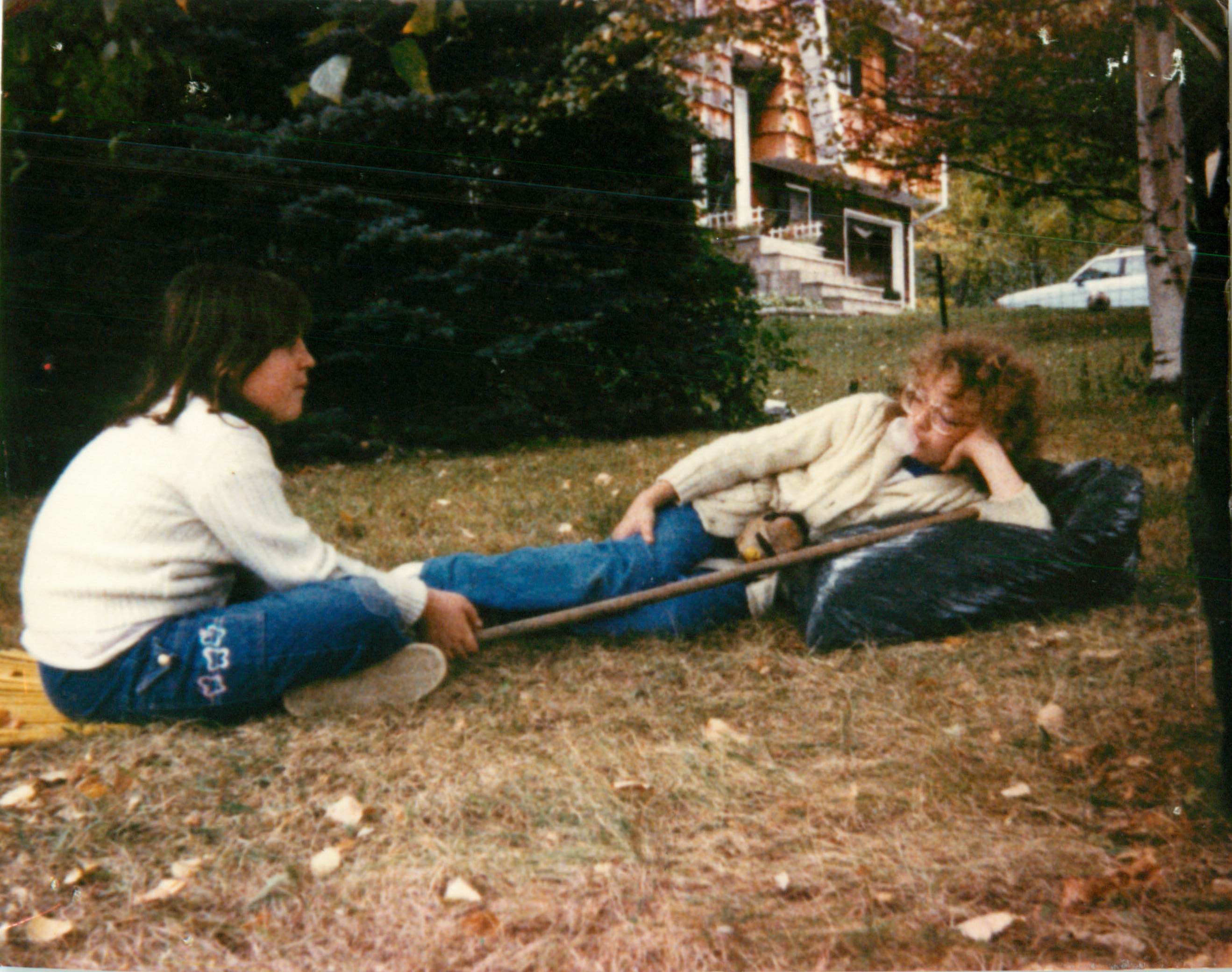 Some “friends” from Facebook are just in the social network, more akin to friendly acquaintances. Some offer a lot of “water-cooler-didja-hear-about” conversation, which as a work-from-home-mom, I totally appreciate and enjoy. Though, I think the thing I enjoy most about FB friends is the way in which we know about what’s going on in each other’s lives. When someone shares joy, I smile with them. When someone shares pain, I gather them in my thoughts and prayers. And how about the birthday-love from FB friends? It’s certainly a different version of friendship than my grandmother experienced, but it’s community all the same. At least it has the potential to be…
Some “friends” from Facebook are just in the social network, more akin to friendly acquaintances. Some offer a lot of “water-cooler-didja-hear-about” conversation, which as a work-from-home-mom, I totally appreciate and enjoy. Though, I think the thing I enjoy most about FB friends is the way in which we know about what’s going on in each other’s lives. When someone shares joy, I smile with them. When someone shares pain, I gather them in my thoughts and prayers. And how about the birthday-love from FB friends? It’s certainly a different version of friendship than my grandmother experienced, but it’s community all the same. At least it has the potential to be…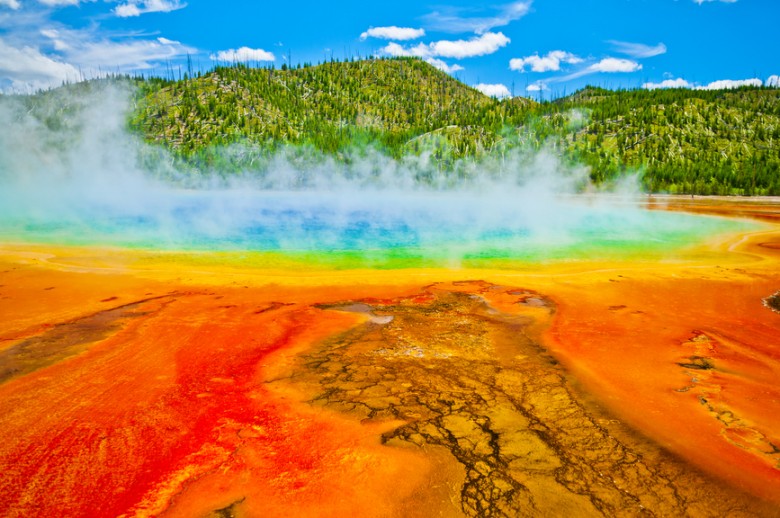
 The geysers…
The geysers…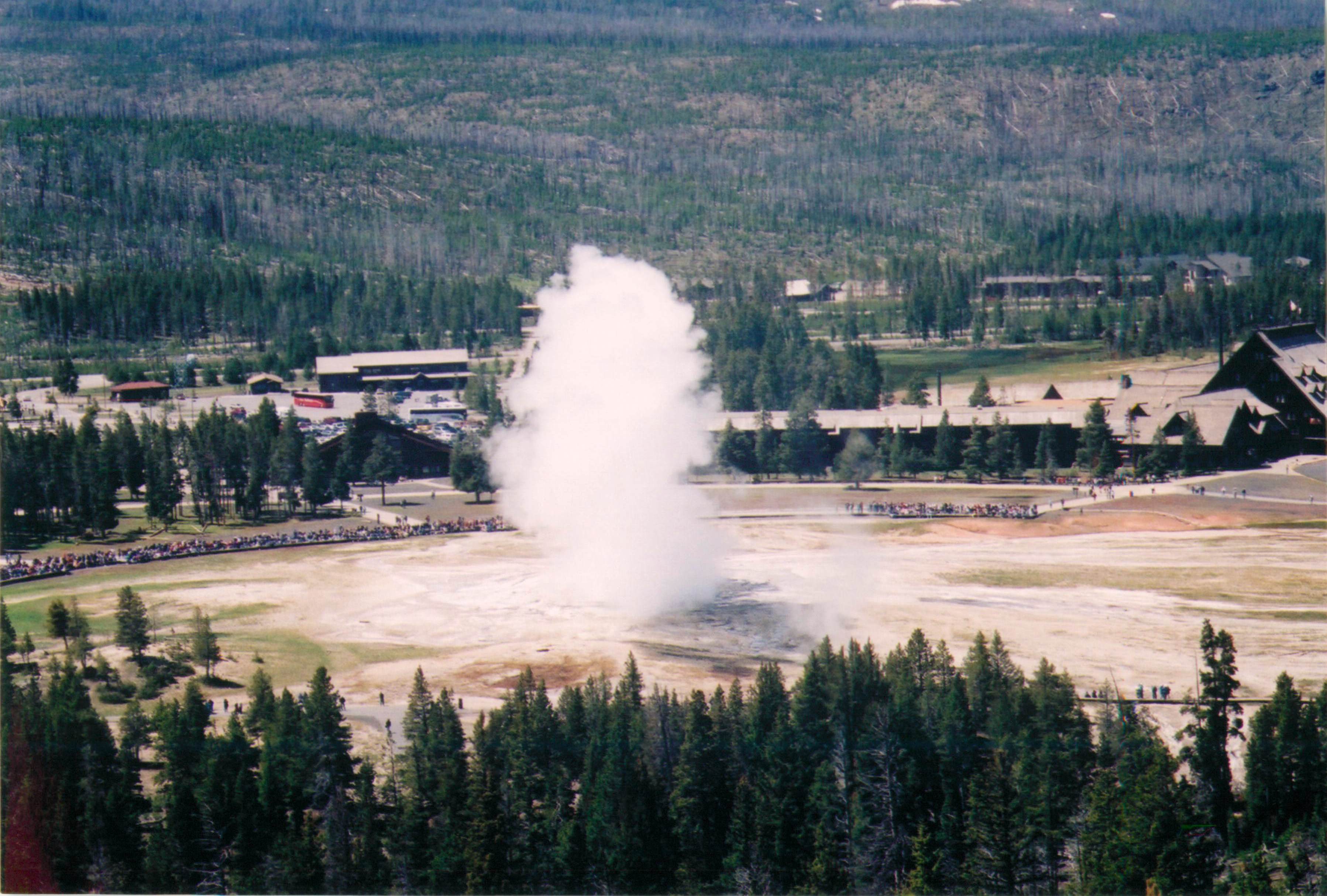 The hot springs…
The hot springs…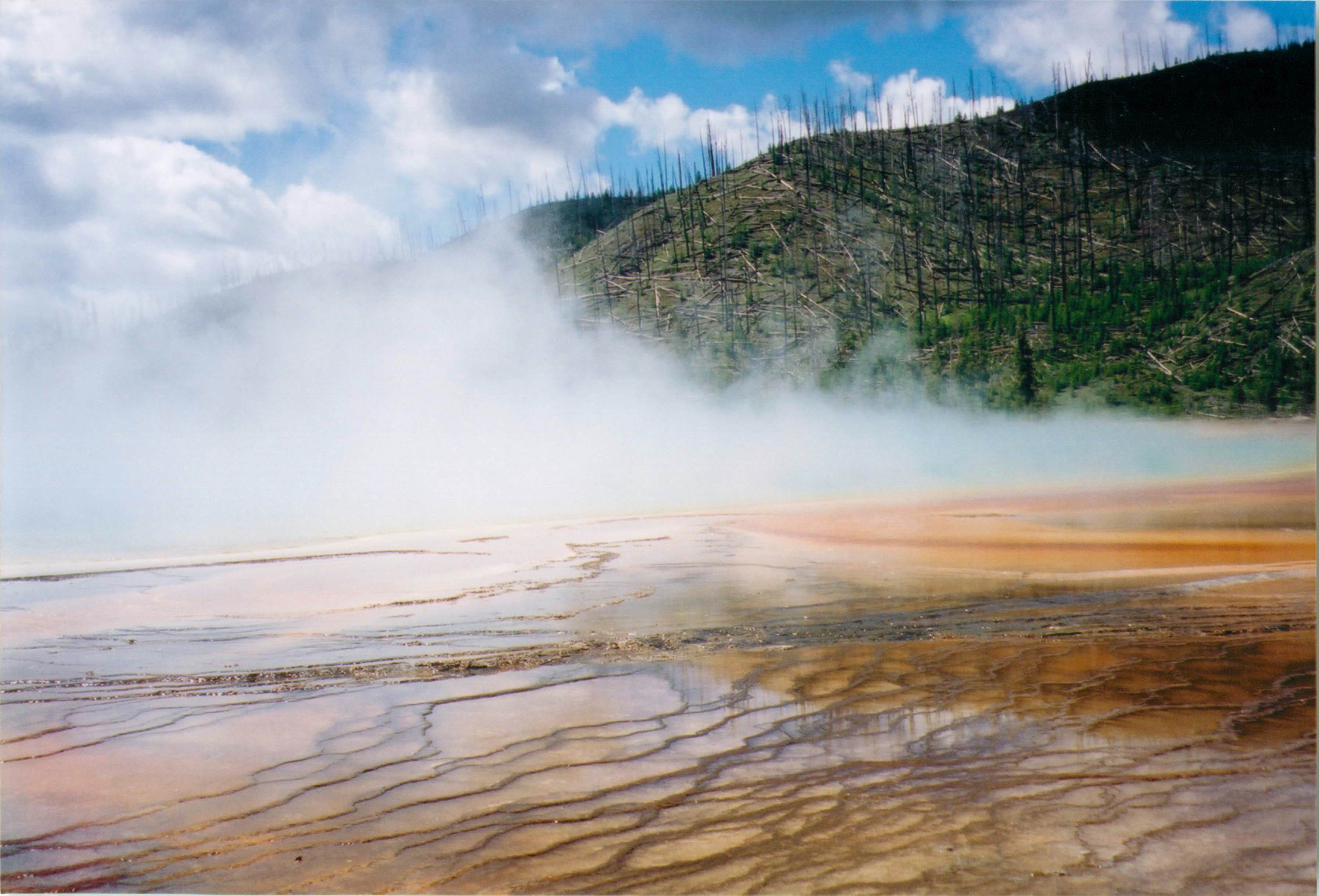 The wildlife…
The wildlife…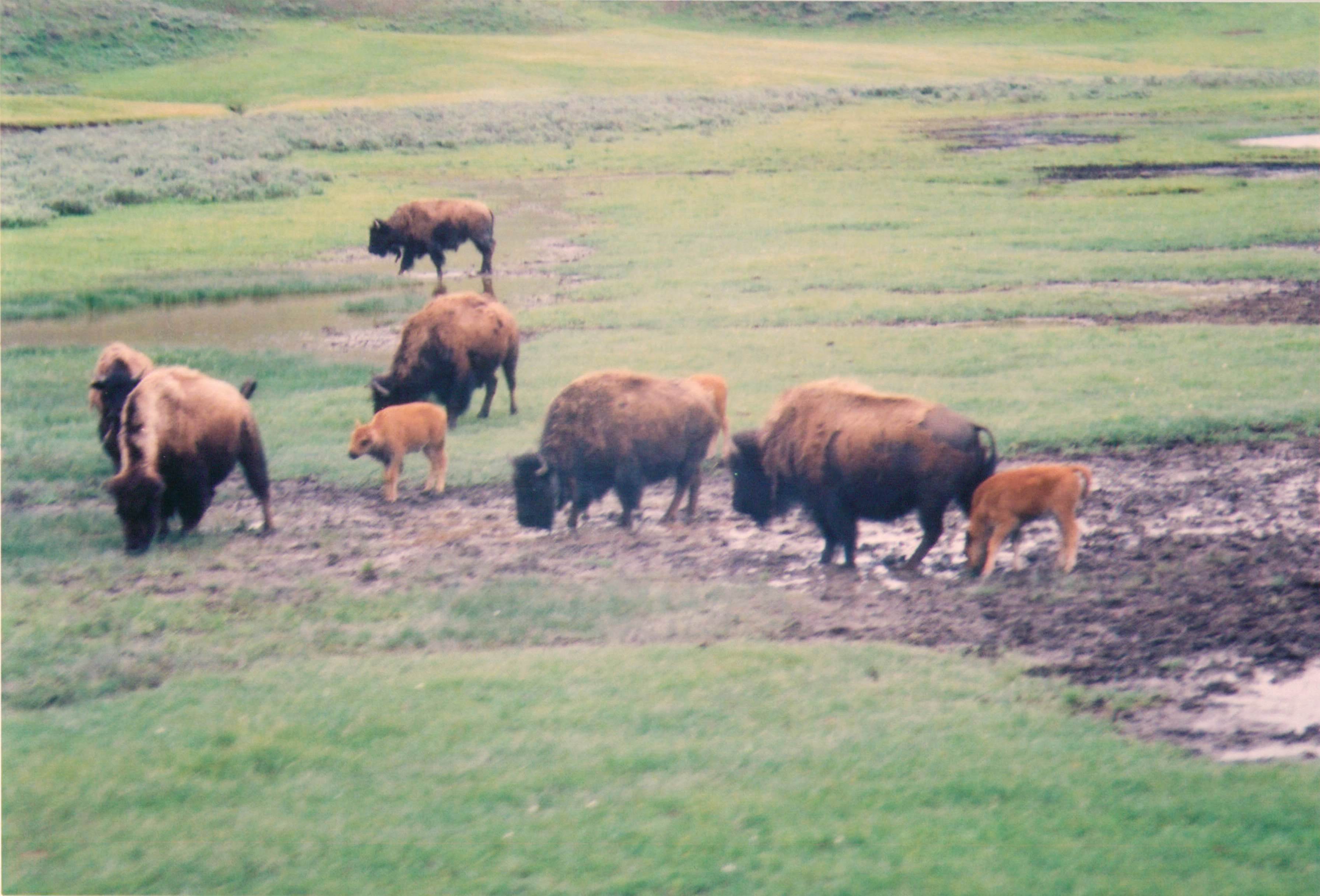
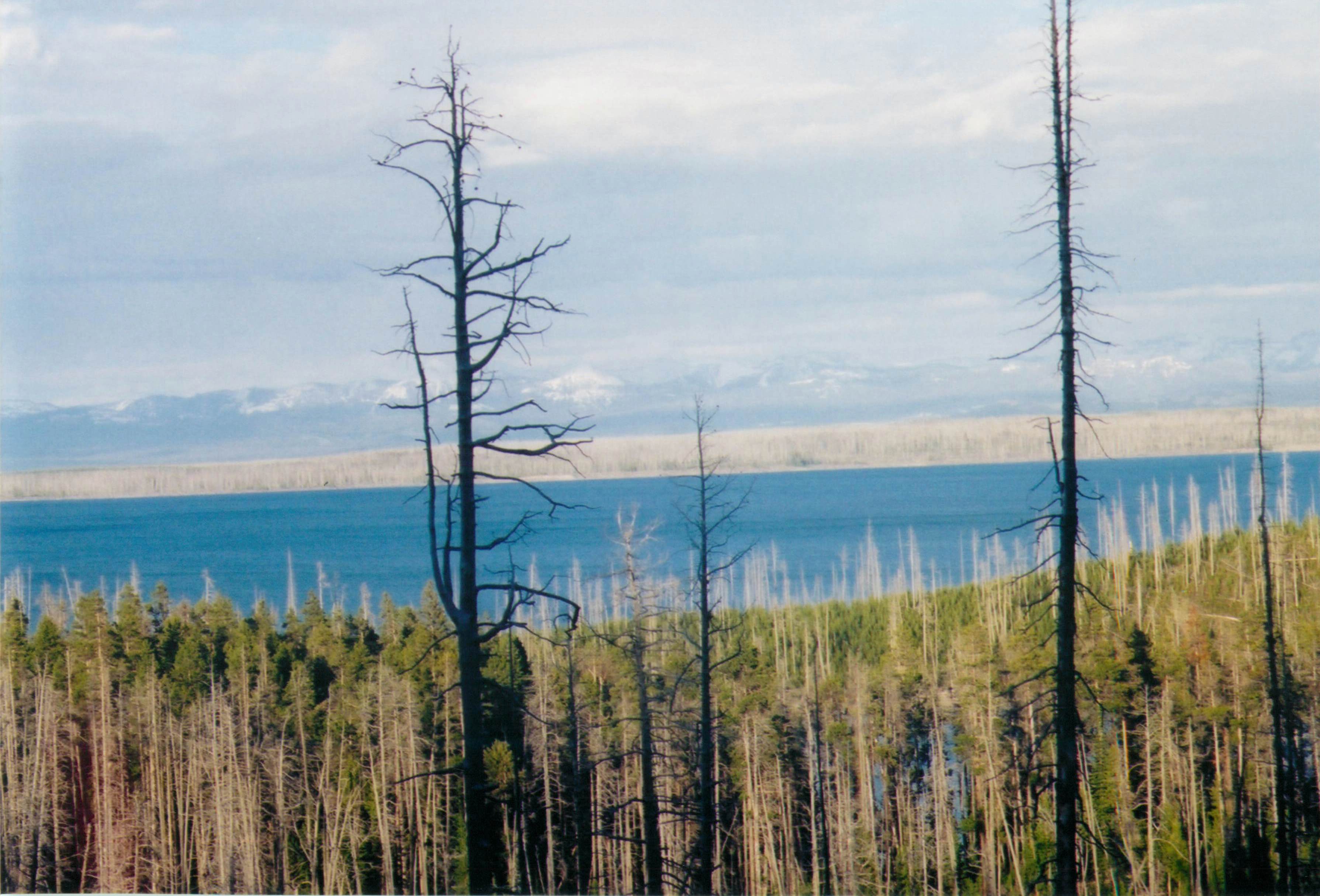 Yellowstone showed the scars of fire. My heart broke to see the scars of such pain amid such beauty.
Yellowstone showed the scars of fire. My heart broke to see the scars of such pain amid such beauty. I remembered the intense “Summer of Fire” in 1988. I couldn’t believe we were still seeing the effects in 2004. My rocket scientist husband, who has a bit of the encyclopedic knowledge going on, explained that fires were an ongoing reality in Yellowstone, most of them sparked by lightning strikes. Like most people, I assumed that fires were bad. I got all Smokey the Bear: “Can’t they do anything to prevent forest fires? Or stop them?” As I shot off endless questions, Peter (who avidly avoids the phrase “I don’t know,”) suggested we tour the visitor center by Old Faithful, which told the Story of Fire at the National Park.
I remembered the intense “Summer of Fire” in 1988. I couldn’t believe we were still seeing the effects in 2004. My rocket scientist husband, who has a bit of the encyclopedic knowledge going on, explained that fires were an ongoing reality in Yellowstone, most of them sparked by lightning strikes. Like most people, I assumed that fires were bad. I got all Smokey the Bear: “Can’t they do anything to prevent forest fires? Or stop them?” As I shot off endless questions, Peter (who avidly avoids the phrase “I don’t know,”) suggested we tour the visitor center by Old Faithful, which told the Story of Fire at the National Park.
